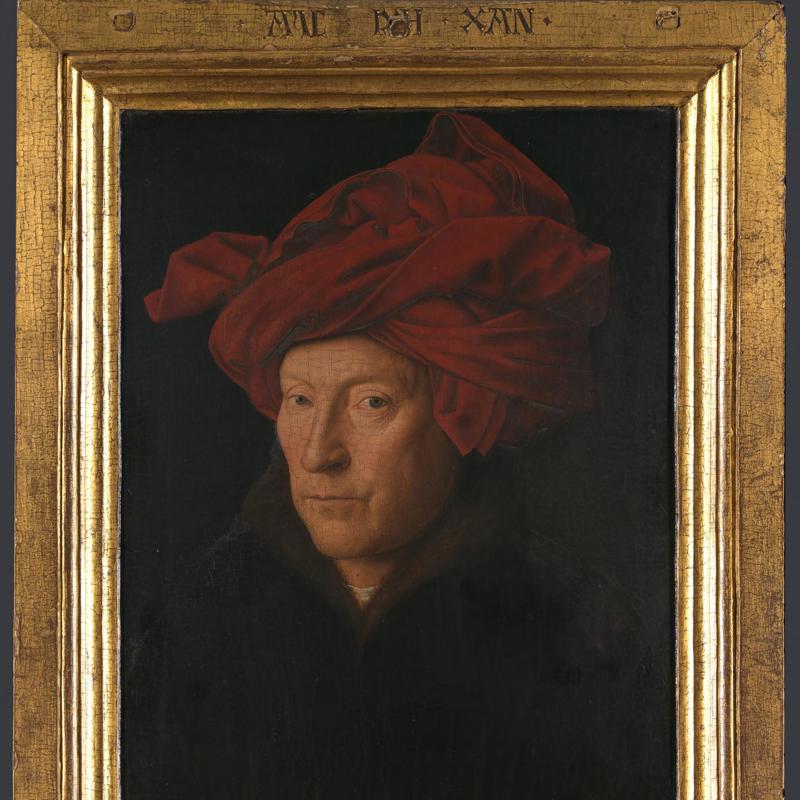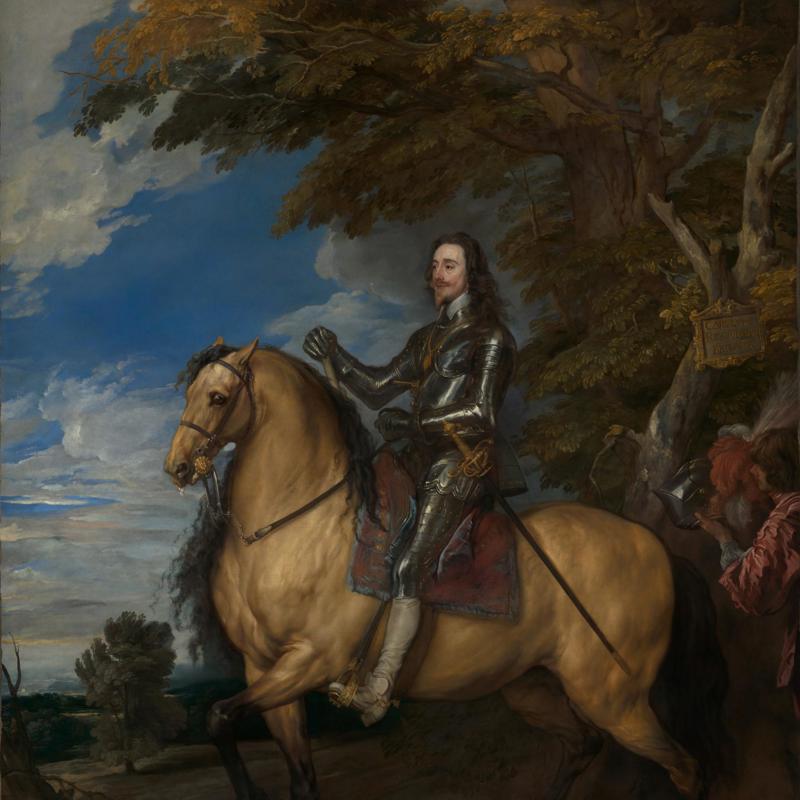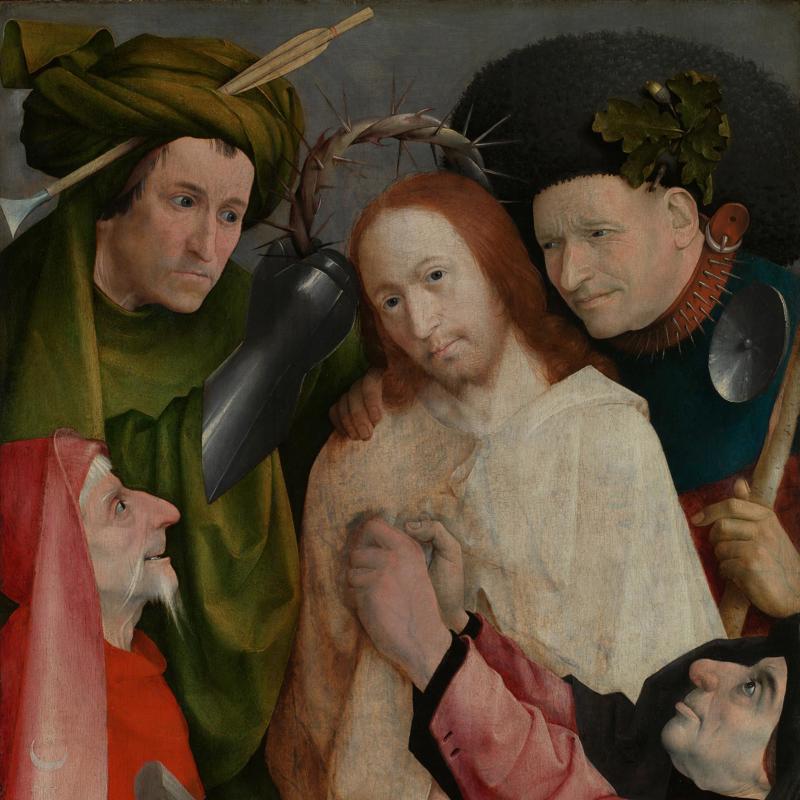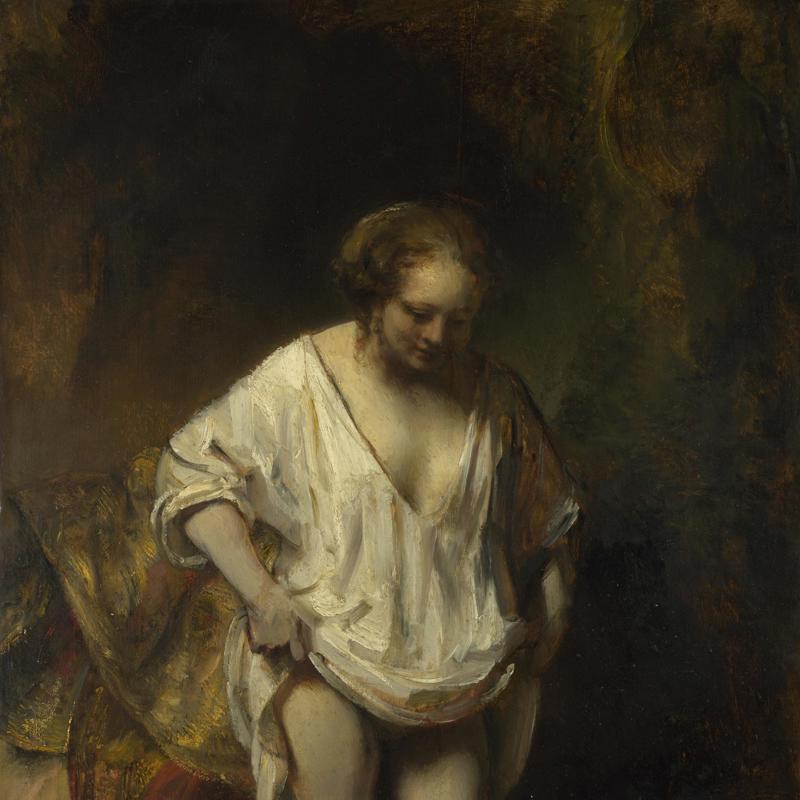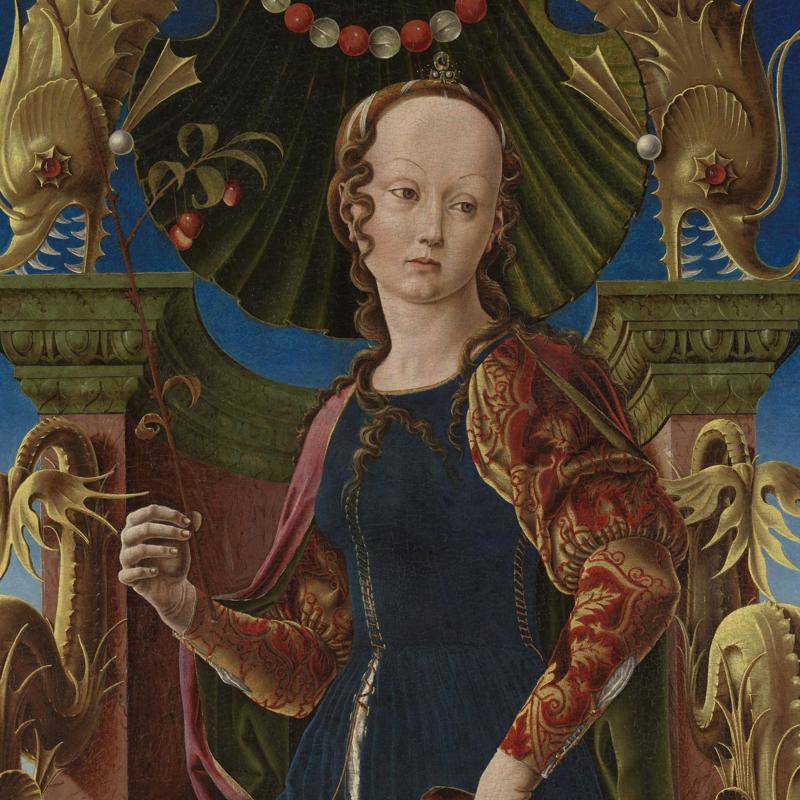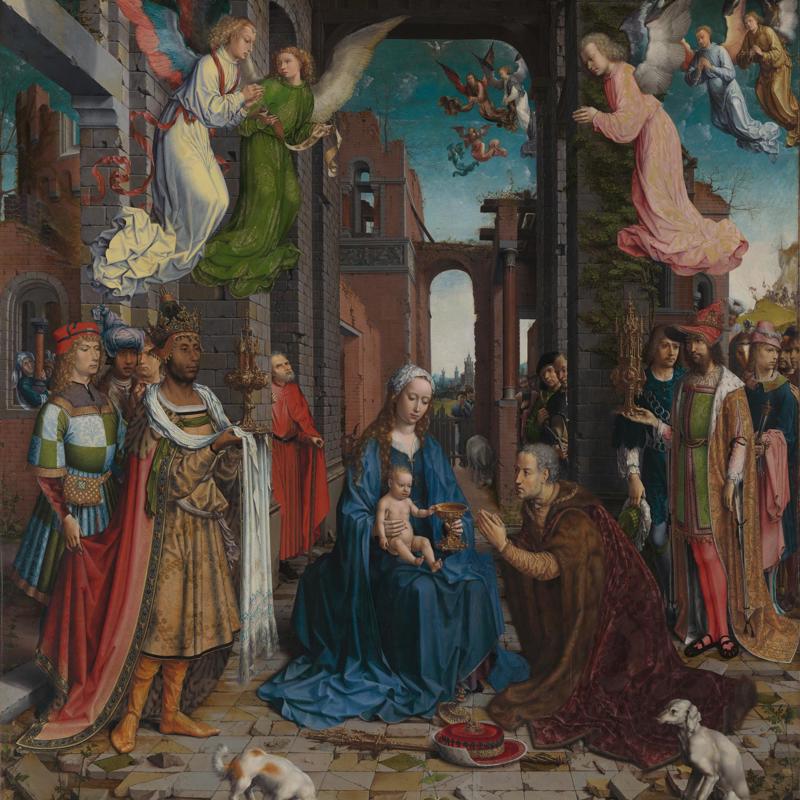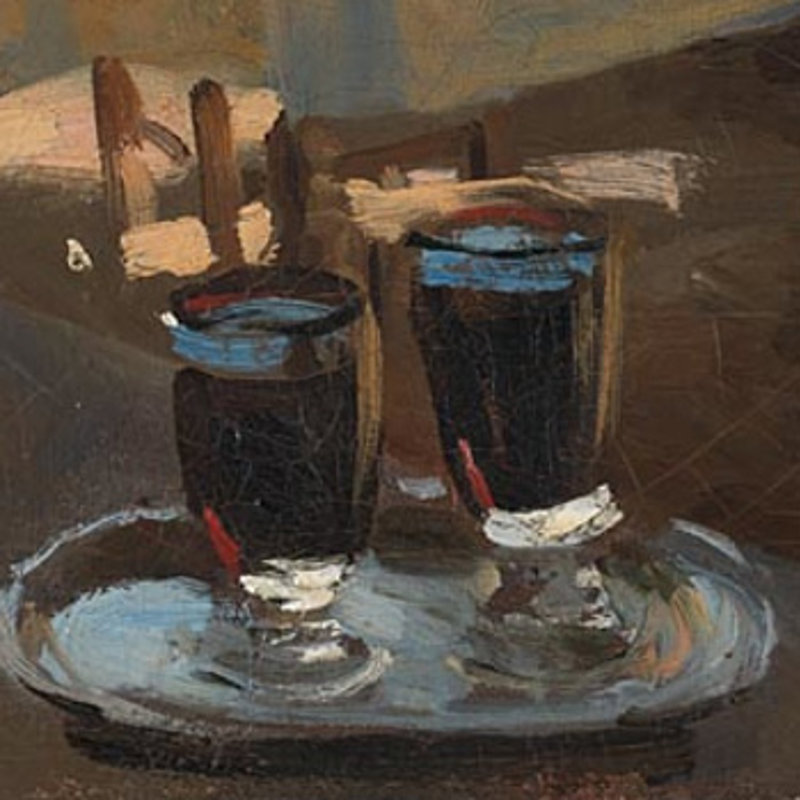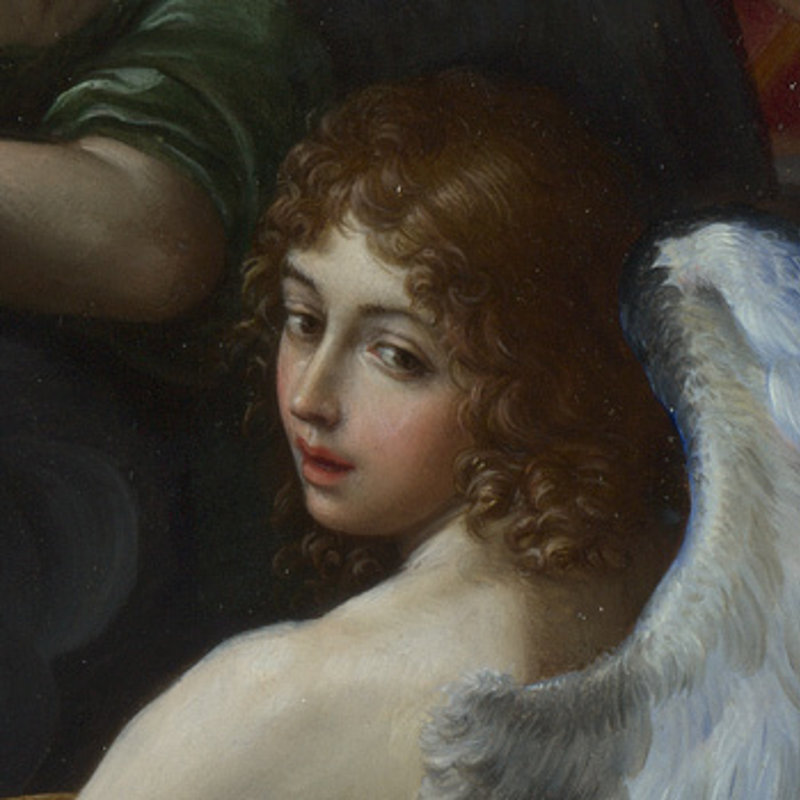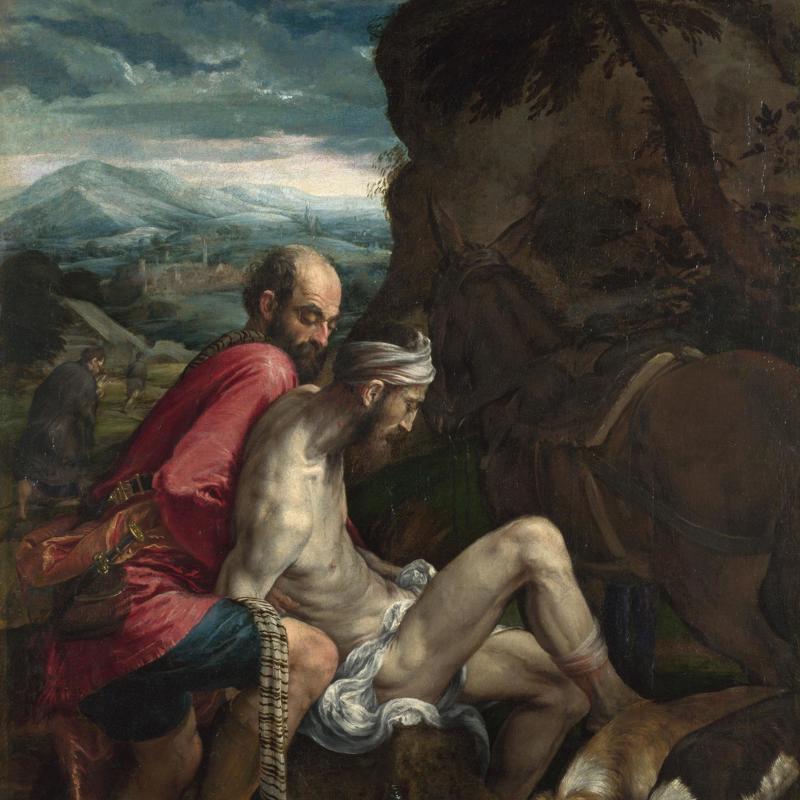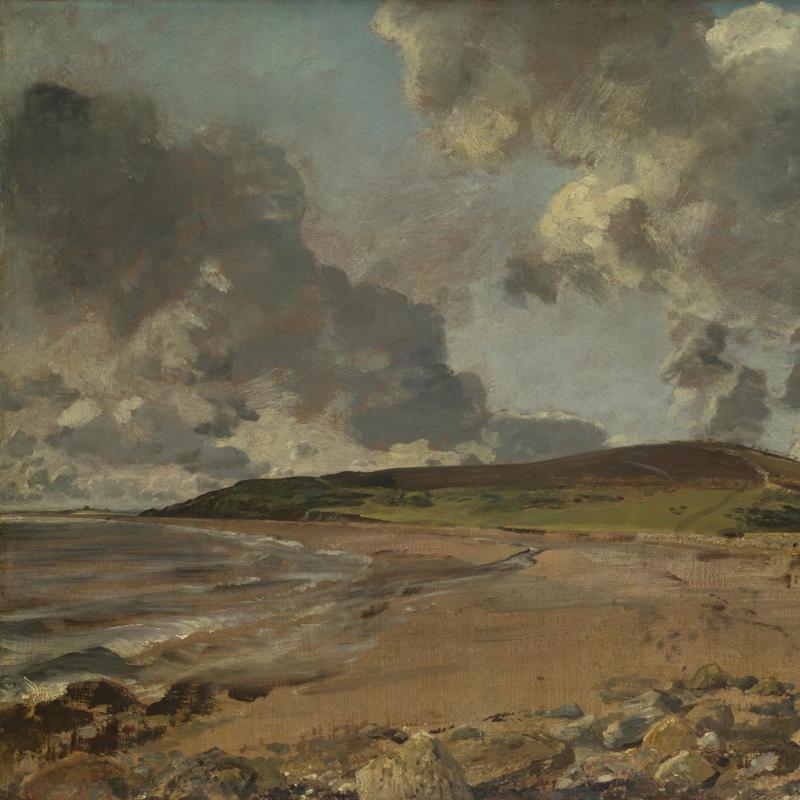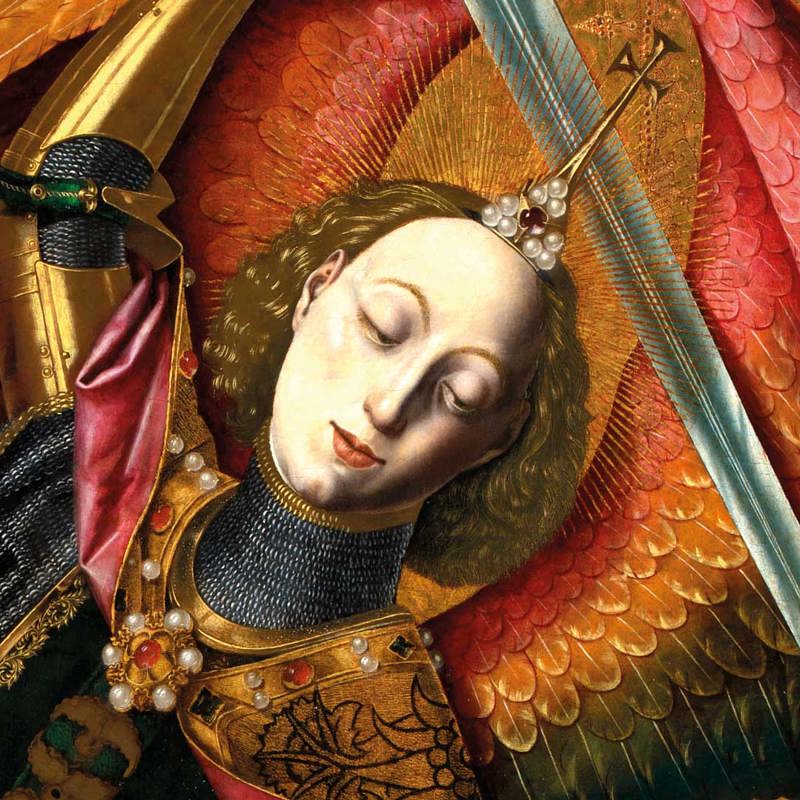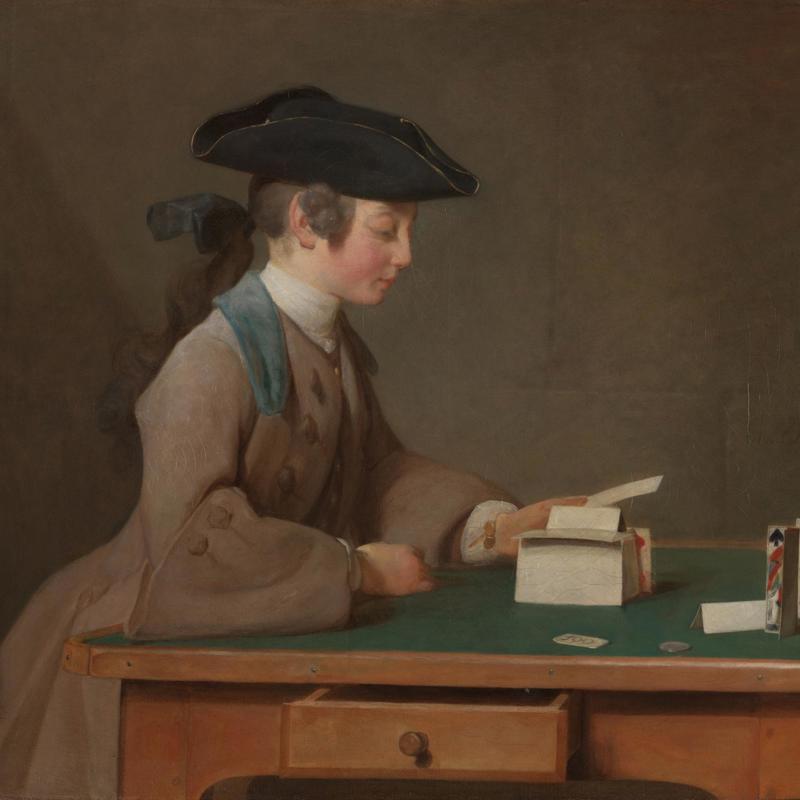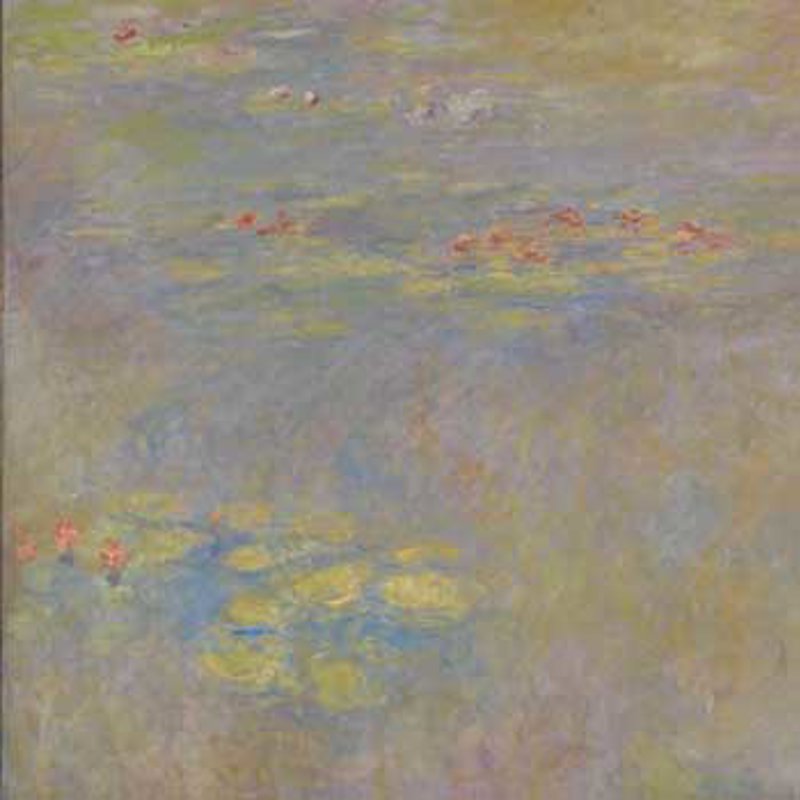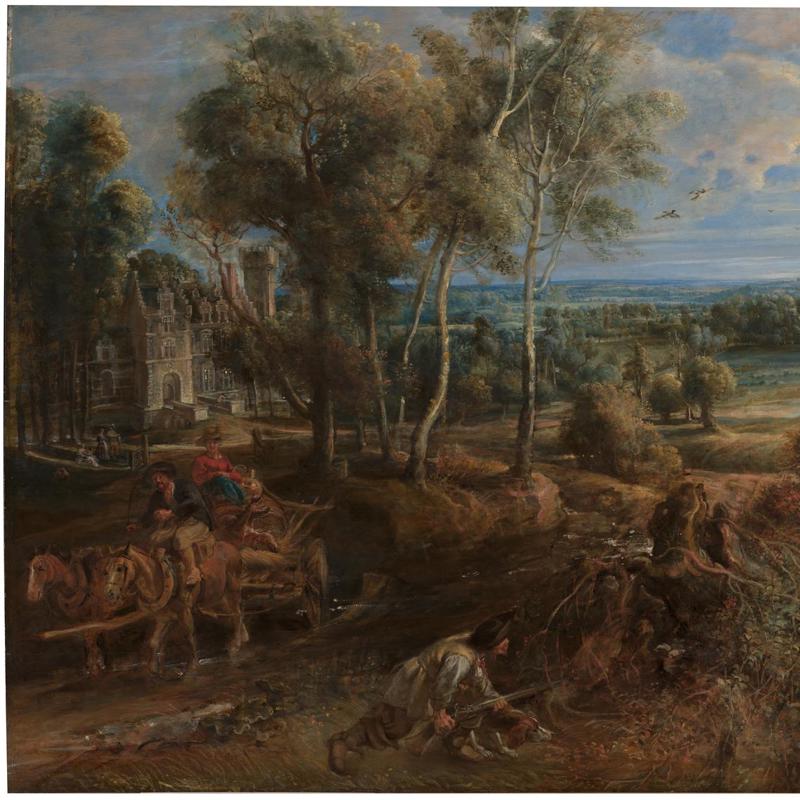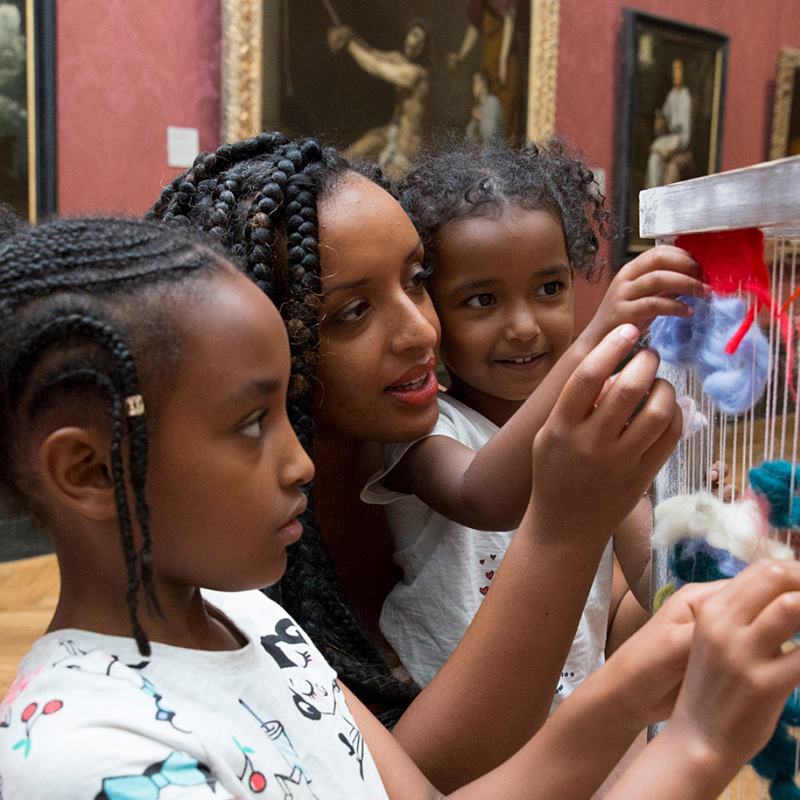Nowadays we can instantly capture and share a face using our phones. Centuries before photography, how wonderful must it have been to make a record of what someone you cared about looked like?
Of course, not all portraits were (nor are) faithful representations, as with historical sources, it's all rather subjective but here, Murillo's painting of himself, in his world-weary 60s, is totally plausible and it's so touching that he painted it for his children.
Murillo uses a muted palette of browns and greys. Colour is restricted to the red chalk of the drawing and the paints laid out on the palette on the other side.
We can just make out a sketched lower leg and foot. A bit of detective work might reveal whether this piece of anatomy features in any of his works.
Murillo wonderfully recreates the crispy texture of the slightly crumpled paper.
It's a recognised devise, the inclusion of a palette as a direct reference to the artist's profession and confirms this as a self portrait.
It features in other self portraits such as Elisabeth Louise Vigée Le Brun's feathery study of herself.
The shiny oil paints add texture. The angle of the brushes, mirroring the angle of the chalk and straight edge on the other side, recede behind the frame to provide the illusion of depth.
What's this? His hand resting outside the frame? Suddenly it feels like he might be really there. This isn't a painting, or rather a painting of a reflection, it's closer to the idea of him looking at us through a window.
It's a bit of visual trickery to give a 3-D effect, something breaking into our space, like the silky sleeve of Titian's elegant gentleman and, further afield, the marble toes hanging off the base of many a statue in Renaissance Florence.











